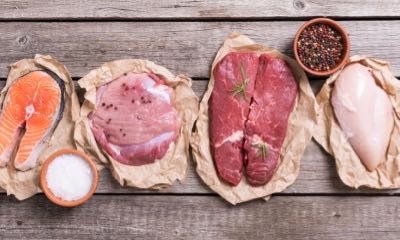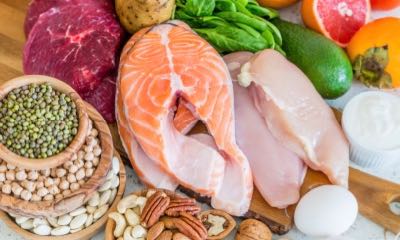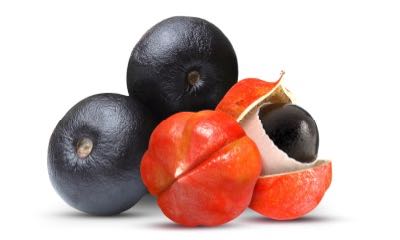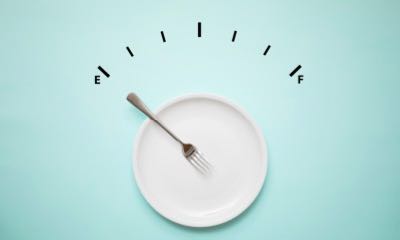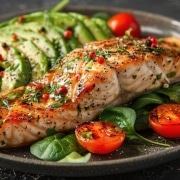Energy Sources to Help You Dominate Your Day
It could be a yawn or an eyelid droop. But it might as well be an alarm blaring the message “Help! Send energy! SOS!” It’s a sure sign a jolt of something stimulating is needed to keep your energy level high enough to take on your task list. You can try to push through the meeting or chore you’re trying to conquer. That doesn’t always work, though. What you really need is an effective energy source.
The next questions become important: Which source is the best? What ingredients pack the most support for your energy level? What energy source will save you from the oncoming malaise and push you through your frenetic, frantic life?
Luckily, these questions have scientific answers. Ultimately, your choice of energy source is personal and has to work for you. But the information to make a good decision is below.
So, take the time to learn about plant sources (like ginseng and guarana), amino acids (like taurine and l-carnitine), and the most popular option—caffeine (coffee, green tea, black tea, or man-made energy drinks). Then you can make the decision for yourself. And hopefully avoid the energy alarm and finally glide through your to-do’s with energy to spare.
A Few Words About Energy
The most basic unit of energy is the calorie. Your body turns food’s calories into energy. It’s happening all the time. That’s because after food is broken down, energy is created inside your cells from ATP (adenosine triphosphate). There’s a great story about that cellular energy production if you want to know what ATP is and how cells use it to keep you going. But you don’t need to be a scientist to understand the energy discussion below.
Keeping your body properly fueled with nutritious, varied foods is important. Without the calories in food, you won’t have the energy to do anything. And you also need a healthy amount of sleep to refresh and rejuvenate your body.
Diet and sleep are certainly the cornerstones of solid energy levels. But life throws a lot at you. And you probably find yourself outmatched occasionally and reaching for something more. For many, that’s an energy drink (could be coffee or tea, too) to help them tackle the seemingly endless flow of tasks.
So, let’s talk about compounds that keep you alert, focused, and feeling energized mentally and physically. Those are the energy sources that stimulate your body and brain to fuel your productivity when you need it most.
Without further ado, find out more about popular energy drink ingredients that can help you maintain your energy levels.
Ginseng to Get the Job Done
Turning to ginseng for an energy boost isn’t new. It’s been part of ancient traditions for hundreds of years.
Asian ginseng is most known for its energizing properties—of the 11 types of ginseng growing around the world. Regardless of species, the real energy source in all types of ginseng is a compound called ginsenoside (a plant steroid).
Ginseng and its active compounds have been shown to benefit:
- mood
- energy (specifically fighting fatigue)
- antioxidant activity
- cellular energy production
Research about how ginseng helps fight against mental and physical fatigue exists, but isn’t robust. It’s theorized that ginseng’s mental effects come from increased levels of certain brain chemicals and its impact on aerobic energy production in the brain. Physical mechanisms have been harder to nail down. And the conclusions are best described as theories right now. That’s because more study is needed to figure out exactly how the stimulating root works in your body.
In fact, some research has struggled to show significant results to back up the effectiveness of ginseng on reducing fatigue and boosting physical performance. A meta-analysis (a study of existing studies) suggested more and better studies—large, randomized, controlled trials—should be done on ginseng’s effectiveness.
That’s the consensus of modern science. But it doesn’t take into account the centuries of usage in traditional applications.
The good news for someone looking to test out ginseng as an energy source is that it’s safe and readily available. Just make sure to consult your physician or pharmacist for possible drug interactions. And also research has shown that cycling ginseng (two or three weeks on and a week off) is a more effective way to use it as an energy supplement.
Turning to Taurine to Tame Tiredness
Usually an amino acid would lead to a discussion of protein structures. But taurine isn’t a typical amino acid. You can find it in your diet in meat and fish, and all over your body—in your heart, brain, eyes, and blood platelets. That’s because your body makes taurine and needs it.
But if you’ve heard about taurine at all, it was probably in a discussion about energy drink ingredients. The amino acid has been popping up in popular drinks since these energizing beverages started hitting store shelves.
Why is taurine turned to so often to boost energy levels, though? The answer probably has something to do with the amino acid’s role in energy metabolism. It also may act like an antioxidant, and it helps with hydration and cellular electrolyte balance, too.
The research on taurine as an energy source is mixed. When combined with caffeine and B vitamins (in a popular energy drink brand), studies have found promising results. That includes suggested benefits related to fighting fatigue among drivers, impacting attention in adolescents, and countering sleepiness.
But it’s hard to pin those promising results directly on taurine instead of the combination of energy drink ingredients. Taurine by itself has slim evidence for improvements in energy. And one study showed taking the amino acid before exercise didn’t help overall performance.
Taurine has been shown to be possibly safe at reasonable doses—with no major side effects found. But it’s hard to be too bullish on taurine as a standalone energy supplement.
Are B Vitamins Your Energy Answer?
You need B vitamins. These essential vitamins are, well, essential to your survival. But claims made about B vitamins increasing energy levels are more suspect.
The fact is, without B vitamins, energy production in your body doesn’t operate properly. Each B vitamin works differently, but they generally help facilitate the complex conversion of foods into energy. So, in one way, B vitamins are all about energy.
But taking extra B vitamins isn’t a direct solution for those seeking energy sources. To feel any fatigue-busting effects, you would need to be deficient in one of the B vitamins. And you don’t want to be in that situation to begin with.
So, be wary of products claiming energy boosts from B vitamins. But don’t disregard the importance of these essential nutrients to your overall health. Here’s a useful guide to each of the B vitamins to boost your nutrition knowledge.
Your Guide to Guarana
The world’s energy drinkers are discovering what tribes of the Amazon have known for a long time. Guarana has a quite a kick.
The seeds of this Amazonian climbing plant have been used therapeutically for centuries. It contains a big punch of caffeine—about four to six times more than you find in coffee beans.
But caffeine isn’t the only thing guarana has going for it as a source of energy. Other compounds in the seeds (theophylline and theobromine) could make the stimulating product more potent than caffeine alone. That’s because they are also caffeine-like stimulating substances.
Guarana also sports a green-tea-like antioxidant profile. One of the Amazonian seed’s most potent antioxidant compounds is catechin. This plant phenol (type of plant chemical) is one of the main connections between the antioxidant possibilities of guarana and green tea.
What does the research have to say about the combination of energy sources found in guarana? Not much because it’s pretty limited. One study aimed to discover whether guarana’s mix of stimulating compounds was more effective than just caffeine. Researchers found that lower doses of the energizing mix in guarana did stimulate in the short-term. But the study also called for more research on the effectiveness of guarana in boosting energy levels.
Research on the safety of the seeds has been positive. It has been found to have low toxicity in reasonable doses. And it’s widely available—both as a standalone product and in energy drinks. But people who are sensitive to caffeine, pregnant women, adolescents, and children should be cautious about how much they consume.
Getting to the Meat of L-Carnitine’s Energy Benefits
Since it was first isolated from meat, l-carnitine got a very fleshy sounding name. But this derivative of an amino acid (lysine) has more to do with energy production than muscle building.
L-carnitine helps chauffeur fatty acids into the power plants of your cells (the mitochondria). Without hitching a ride with l-carnitine, fats you eat couldn’t efficiently be used for energy production. And fat—which, don’t forget, is one of the essential macronutrients—is full of potential energy.
The research done on l-carnitine is promising. Usage for 30 days was found to positively impact fatigue—both mental and physical. But doses over three grams per day—about triple what would be recommended—were found to cause a variety of gastrointestinal issues.
Caffeine is the King of Energy Sources
You or someone you know has almost certainly turned to caffeine for a pick-me-up. As long as you’re reading this during the day, you know someone who has had caffeine in the last hour. It’s that popular.
And there’s good reason for caffeine’s ubiquity. It works. Consuming caffeine is a well-established way to fight fatigue naturally. It doesn’t even matter the source.
You might feel like caffeine has a magical ability to power you through your day. But the way it works is pretty established science. Caffeine cranks up your metabolism and supports naturally stimulating chemicals in your body. It also exhilarates your central nervous system, starting with a handy trick it plays in your brain.
Caffeine fits into a receptor in your brain for a compound called adenosine. When adenosine clicks into its receptor, it usually helps you relax. But when caffeine takes its place—effectively blocking the adenosine—your brain and nervous system do the opposite. And that’s how caffeine revs up your central nervous system. It’s why it helps you feel alert and energized.
But you don’t want to overdo it with caffeine. Otherwise, too much caffeine can make you overly anxious and even shaky. It is potent, and a healthy adult shouldn’t consume more than three to four hundred milligrams per day. Some people—including pregnant women, adolescents and children—are more sensitive to caffeine and will need to limit their intake even more. And remember that high doses of caffeine can lead to a hard crash. So, you may want to spread out your caffeine consumption in smaller amounts throughout the day.
For most, the question about caffeine isn’t whether it works on energy levels. Instead, it’s which source is best and how much caffeine each beverage contains? The following table can help you answer those questions.
| Beverage Type | Amount of Caffeine | Antioxidant Activity? | Other Important Compounds | Fun Fact |
| Brewed Coffee (non-decaf, non-espresso) | 85–165 milligrams (mg) per eight ounces (237 milliliters) | Yes | Phenolic compounds (like chlorogenic acids), ferulic acid, and magnesium | The more roasted the coffee bean, the less caffeine remains in your cup. So, light roast packs the biggest caffeine punch. |
| Black Tea (freshly brewed, not bottled) | 25–48 mg per eight ounces (237 mL) | Yes | L-theanine (an amino acid that could impact brain chemicals), flavonoids, catechins, and tannins | Black tea comes from the same plant as green tea, but is fermented, which accounts for the color difference. |
| Green Tea (freshly brewed, not bottled) | 25–29 mg per eight ounces (237 mL) | Yes | Similar to black tea: L-theanine (an amino acid that could impact brain chemicals), flavonoids, and catechins (including EGCG, or Epigallocatechin Gallate) | Green tea (and black tea and matcha) all come from a bushy plant (Camellia sinensis) that’s native to China. |
Select Your Stimulating Beverage Carefully
You know the energy level you need to maintain to tackle your to-do list. And now you understand a little more about energy sources that can help you cross the finish line. But don’t forget to pay attention to the calories and sugar content of whatever beverage you choose.
Getting too much sugar will wind you up only to trigger a big crash. Plus, all the extra calories in sugary sodas, energy drinks, and fancy coffees might slow down your weight-management efforts.
So, next time your energy alarm goes off, you know what to do. Turn to the energy source that will work best for what you need. And then bask in a wave of energy that can wash away your to-do list.
References
https://www.chemistryworld.com/features/chemistry-in-every-cup/3004537.article
https://www.healthline.com/nutrition/ginseng-benefits
https://www.healthline.com/nutrition/guarana-benefits
https://www.healthline.com/nutrition/stimulants-in-tea
https://www.healthline.com/nutrition/what-is-taurine
https://www.healthline.com/nutrition/top-10-evidence-based-health-benefits-of-green-tea
https://www.medicalnewstoday.com/articles/262982.php
https://www.ncbi.nlm.nih.gov/pmc/articles/PMC4399916/
https://www.ncbi.nlm.nih.gov/pmc/articles/PMC4665516/
https://www.ncbi.nlm.nih.gov/pmc/articles/PMC5102849/
https://www.webmd.com/diet/features/the-buzz-on-coffee#1
https://www.webmd.com/food-recipes/features/antioxidants-in-green-and-black-tea#1
https://www.webmd.com/vitamins/ai/ingredientmono-1024/taurine
https://www.webmd.com/vitamins/ai/ingredientmono-1026/l-carnitine
https://www.webmd.com/vitamins-and-supplements/black-tea-uses-and-risks#1






